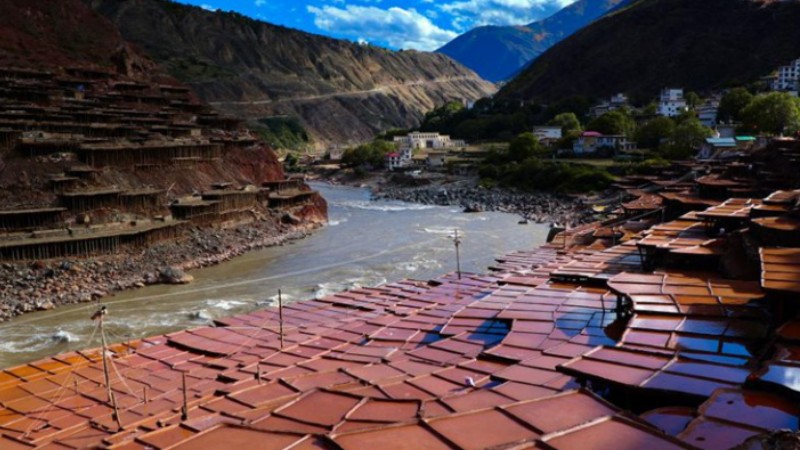Revived flood-hit regions all geared-up for winter
BEIJING, Nov. 9 (Xinhua) -- Wednesday this week marked Lidong, or the Beginning of Winter, the 19th of the 24 solar terms in the Chinese lunar calendar.
Traditionally, the solar term heralds the arrival of a wintry climate: low temperatures and strong winds, followed by frost and snow. Under such circumstances, it is imperative for households to prepare for the harsh weather, and it is especially so for the northern and northeastern parts of China.
This summer, northeast China and the Beijing-Tianjin-Hebei region were hit by floods caused by heavy rainfall. As reconstruction work proceeded, residents who once lost their homes were again guaranteed shelter from the winter.
On Oct. 22, Zhao Xuyuan, a resident of Xinkai Village in northeast China's Jilin Province, moved into her new home. A few months back, a flood destroyed Zhao's house, like those of her fellow villagers.
"My family and I spent two months in a temporary settlement," said Zhao. "Now, with our new home finished, we all feel relieved."
The reconstructed Xinkai Village, taking up 186,200 square meters, is 8.7 meters higher than the original village to withstand future floods. In addition, all new houses now have electric underfloor heating systems.
Similar reconstruction or relocation projects took place in other flood-damaged regions. Local authorities allocated funds and personnel to advance housing reinforcement or rebuilds based on each region's situation.
In addition, proactive measures were also taken to facilitate the resumption of industrial and agricultural production activities in flood-hit regions.
In Tianjin Municipality's Minsheng Village, local resident Hao Deyun recently finished sowing winter wheat seeds.
Earlier this year, due to heavy rainfall, the land Hao contracted to farm became submerged, making sowing winter wheat impossible.
Fortunately, once the flood backed down on Sept. 26, Hao was assisted by local authorities in recovering the farmland. "The local government summoned all help available to help us drain off water. Water pumps worked around the clock to drain the water in the farmland into the nearby river," said Hao.
With the help of local farming technicians, Hao began sowing the recovered farmlands. As of Nov. 4, all 1,000-plus mu (around 66.7 hectares) of the lands were sowed, and Hao can once again expect a harvest next spring.
IMPROVING DISASTER PREVENTION AND RELIEF CAPABILITIES
In the aftermath of the floods, the people began rebuilding infrastructure to guard against future disasters.
This summer, heavy rain-induced floods in Beijing caused damage to some water supply, drainage facilities, and watercourses, wreaking havoc on the city's flood discharge capacity.
The Beijing government promptly made plans to improve flood prevention projects along waterways and advance the building of gullies to manage mountain torrents.
In Hebei's Xingtai City, a new reservoir-building project with a total capacity of 128 million cubic meters was officially launched to bolster the flood-prevention system along the Ziya River basin.
In addition to the reservoir, the Ministry of Water Resources has pledged more water-resource management projects in the country.
The central government will also issue 1 trillion yuan (about 139.3 billion U.S. dollars) in additional government bonds in the fourth quarter to support the reconstruction of disaster-hit areas and raise the country's disaster relief capabilities.
Photos
Related Stories
- 2,508 fuel-cell vehicles in Beijing-Tianjin-Hebei region issued number plates
- Beijing-Tianjin-Hebei region sees foreign trade growth in Jan-Aug
- Beijing-Tianjin-Hebei region sees foreign trade growth in Jan-May
- Beijing-Tianjin-Hebei region forms new growth driver through coordinated development
- Railway linking Tianjin, Beijing's airport to be operational
Copyright © 2023 People's Daily Online. All Rights Reserved.









